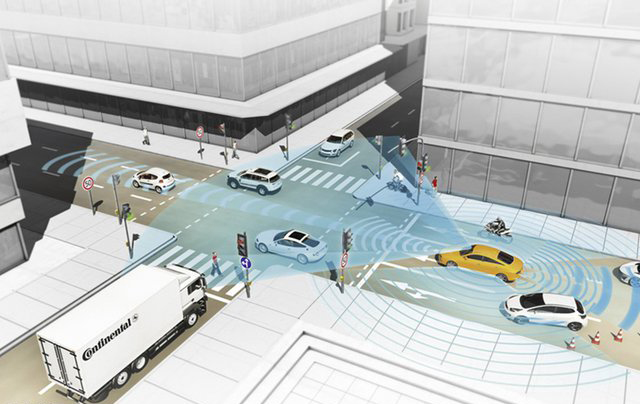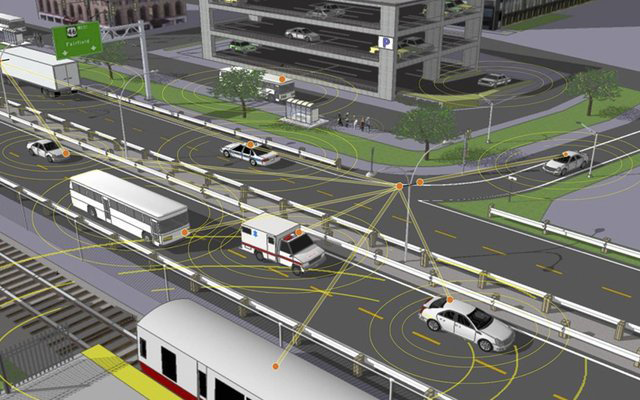
Nowadays, many car companies are discussing a travel concept, that is, future transportation. On November 3, 2016, we sat down with General Motors to talk about their understanding of future transportation. In fact, talking about future traffic, it contains a lot of content, automatic driving, time-sharing, public travel, car electrification, and even Hyperloop can be counted as one of the future traffic. Although GM is "drained" in all its ways, it seems to be more exclusive to V2X (the car interacts with outside information) in autonomous driving.

If you talk about autonomous driving, I think many people think of ADAS (Advanced Driver Assistance System) for the first time. Indeed, ADAS has become synonymous with autonomous driving. But if you mention V2X, I think a lot of people will be stranger. In fact, it is a branch of autonomous driving, and it is a technology that complements ADAS.
Nowadays, autopilot is mentioned. I think most people think of ADAS (Advanced Driver Assistance System) for the first time. This technology is biased towards allowing the vehicle to perform real-time calculations, allowing the vehicle to achieve automatic driving through the camera and radar.
V2X (the vehicle interacts with the outside world) is to let the vehicle communicate with the surrounding environment through mobile interconnection, so as to know the real-time traffic conditions and achieve predictable driving.
Simply put, the V2X technology concept is to install a communication device on the car, and then use traffic lights, road signs, road vehicles, pedestrians, etc. as a signal source for real-time communication. In this way, even if the car itself does not have the ability to detect, but through continuous inquiry about surrounding vehicles and transportation facilities, it can also understand its surrounding environment, thus achieving safe automatic driving.。

Simply put, V2X is not difficult to implement in technology. It can realize real-time communication with other vehicles by adding communication equipment to the production models.
If traffic lights, road signs, road vehicles, pedestrians, etc. are all used as signal sources for real-time communication, this is the ultimate ideal state of V2X.
The biggest advantage of V2X technology over ADAS is that it can make the vehicle predictable, rather than responding to it. Take the signal light as an example. The ADAS is based on the camera to identify the image. The algorithm determines whether the signal light is red or green. The V2X allows the vehicle to receive the signal 100 meters away, so that the signal state is known, which makes the automatic driving. It has become simpler.
Within 300m, the V2X can receive early warning signals from other vehicles, which is more predictable than ADAS.
n history, GM's understanding of future transportation has been relatively thorough. From the idea of an automated highway system in 1939, the Firebird II Concept (Firebird II Concept) was released in 1950, and the car collision avoidance system project was launched in 2000. GM has been steadily moving forward.
In the Firebird II concept car released by GM in 1950, the Internet of Vehicles began to appear.
In 2012, GM began developing a semi-automatic driving technology called Super Cruis, which is similar to systems such as the Tesla Autopilot, which reduces driver stress. (Do not loosen the steering wheel during actual driving.)
On top of the 2017 US version of the CT6, GM will be equipped with Super Cruis (Super Cruise Technology), which is a practical application of GM in ADAS, regardless of V2X.
By 2005, the GM V2V system was first publicly displayed, making it a reality. Since then, major car companies have begun to invest in the development of the Internet of Vehicles system, with outstanding results. Until four years ago, GM provided eight specially modified models to the US Department of Transportation's Connected Car Safety Navigation project team, which took a one-year period to conduct real-world testing and advance the V2X project directly to an important stage of development. At this point, the V2X project has matured at the technical level, but it is still lacking in practical applications.
At the beginning of this year, GM demonstrated V2X technology in the National Intelligent Network Automotive Demonstration Zone. Nowadays, V2X is mature at the technical level, but it still takes time in practical applications.
GM's V2X road
By simply understanding the basics of V2X and the general history of thinking about future transportation, let's take a look at how GM now understands future transportation. I am honored to have an interview with GM's President of the Chinese Academy of Sciences, Mr. Du Duling, on the GM's future transportation activities, to learn more about GM's achievements in V2X and intelligent transportation.
Not long ago, GM and other companies first tested and validated the domestic autonomous V2X application layer standard.
In V2X technology verification, the anti-interference problem is an important indicator to test whether V2X is mature or not. During the development process, V2X itself has a certain anti-interference ability. If there is serious interference, ADAS will assume the responsibility of assisting driving, but the vehicle will lose its predictability. Today, the reliability of ADAS is extremely high, and it may be that after three or ten years, ADAS can be completely independent.
In the development process, V2X's anti-interference ability is an important indicator in itself, but if it encounters serious malicious interference, V2X will also lose its effect.
After the V2X has lost its function, ADAS will assume all driving assistance functions to ensure safe driving.
For the third question, Dean of the General Research Institute gave a very clear answer, that is, if the number of cars increases exponentially within a certain range, vehicle communication will definitely be affected. Let's take an example. If there are two cars, they will communicate 100 times a minute. If the number of vehicles increases to 10, the number of communication times may be reduced to 70 times. However, according to the experiment, this does not affect the warning effect of the V2X on the driver, because the V2X is only a reminder function and cannot actually control the vehicle to respond accordingly.

In a certain area, if the number of cars is too large, V2X will definitely be affected in communication quality, which is an unavoidable problem.
According to the division of the automatic driving level, the V2X is only a Level 1 level because it is only predictable and does not have vehicle control capabilities.
For the car to establish communication with pedestrians and bicycles, GM believes that this is completely feasible in theory, but there are still many problems at this stage. For example, if mobile phones and cars are kept at the same frequency, the power consumption will be extremely high, which will be held by mobile phones. Some people are inconvenienced. If this problem cannot be solved, it is unrealistic for V2P to want to mature quickly.
Previously Delphi proposed the V2E concept (all in the car), although theoretically feasible, but does not actually have such conditions.
Nowadays, the biggest obstacle to the development of V2X in China is the protocol and road test equipment. Nowadays, countries around the world lack infrastructure for road test. Car companies believe that without a road test facility, a large number of V2X technologies do not have practical significance. After all, on the road, a large number of old models do not have V2X and cannot establish communication. The government believes that the car companies do not carry V2X, the government complained that the construction of road test equipment is a waste, which is deadlocked.
For China, the lack of basic road test equipment and unified communication standards is the biggest obstacle to the development of V2X, which requires the government to carry out cross-department coordination.
The problems of decoding protocols and communication methods, although the major car companies can be resolved through negotiation, but this is a long process. After all, GM now has its own set of technologies. Mercedes-Benz, mainland China and other companies also have independent technology development and decoding programs. Whose listeners? I think this is debatable.
Nowadays, in V2X, companies such as Mercedes-Benz and China have their own communication standards and decoding protocols. How to unify these codes is a long process.
After the theory, we experienced the general V2X technology in China's first self-driving town, the National Intelligent Networking Car Demonstration Zone.
In the actual road, we can't know what kind of road conditions are in front of the front car. After the V2X is equipped, we can skip the front car directly and communicate directly with the vehicles ahead, which can reduce unnecessary rear-end collisions.
By connecting the vehicle communication module to the national traffic signal network, the car can know the status of the intersection traffic signal at any time, thus alerting the driver to deceleration.
In the actual use of V2X, it is displayed in the car, it can give very detailed information to the driver for reference.
It must be said that the universal V2X technology can indeed make up for the hidden dangers caused by ADAS due to environmental reasons and insufficient detection distance. However, in the country with complicated traffic conditions, what is the actual situation, we still need to look at it while walking.
In many cases, V2X technology can indeed make up for the shortcomings of ADAS, but in reality, we can't make a final conclusion.
On the 2017 US Cadillac CTS, GM will be the first to ship V2X technology.